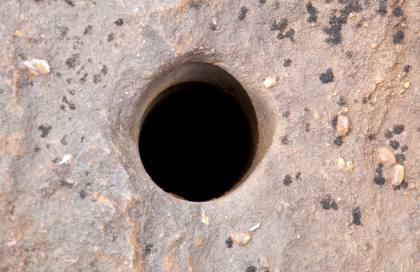
We always welcome a Letter to the Editor to share with our readers. A popular subject in recent weeks has been issues surrounding the proposed asphalt plant. This letter from one reader calling himself Harvey. Ed
In recent weeks I wrote to Mr Murphy (LPA) outlining my concerns of the potential shortcomings of the current soils investigations. It would appear that my concerns have been disregarded and not brought to the attention of the Environment Agency (EA) or IWC consultants.
I have been asked to accept that because the EA have had sight of the proposals and not raised any concerns no further action need be taken.
Boreholes
I would confidently assert that while IWC consultants and the EA have reviewed the applicant’s scope/specification for these soil investigations, they have not been asked to take responsibility for or comment on the number/position of the boreholes.
Has the applicant given geodetic positions for these boreholes? Or have they simply marked a site plan giving approximate locations? The significance of this is that without independent observation the IWC cannot confirm with any degree of confidence where the borehole samples were actually taken from.
Important to verify data
The importance of being able to verify soils data cannot be overstated, especially bearing in mind that the applicant claimed that no asbestos was found on site from a previous soils investigation.
However they failed to mention that unless the laboratory is specifically instructed to test for asbestos then none will be found. Moreover 60% of the samples collected could not receive accreditation because either incorrect procedures had been used or they had suffered interference.
Comprehensive and representative samples needed
Professionals continuously involved with soils investigations are well aware of the potential shortcomings of such surveys and how reports can be influenced. It is therefore extremely important that the information is seen to be gathered in a credible way i.e. with sufficient numbers of boreholes at sufficient depths and intervals in order to obtain a comprehensive and representative sample of ground conditions over the whole site.
In this case the applicant has stated that 9 boreholes will be taken on a 60 metre grid over the site. On first impressions this seems a reasonable approach. However when one looks at the location plan for these boreholes it becomes evident that they are on the widest grid possible with the majority (two thirds) on the periphery of the site where there is likely to be least contamination.
Boreholes need to be correctly sited
To give an analogy, the further one goes from the source of noise, the less sound one hears until a point is reached whereby it is impossible to distinguish the original noise from any background sound.
The same principle applies to contamination. The further one goes from the central location of any ground contamination the less contamination is encountered until a point is reached whereby none will be present.
Site periphery will be less contaminated
The periphery of the site will self-evidently be the least contaminated. Had both the EA and IWC consultants been asked to comment on and take responsibility for the number/location of boreholes they would have no doubt noted this fact and challenged it. If, as can happen, the boreholes are in fact taken even closer to the river the likelihood is that very little if any contamination will be found and the site declared to have little or no contamination and present a minimal threat (if any) to the environment.
Such a conclusion would not carry any credibility given the extent of ship building/construction activity in Cowes circa 1910 -1950’s (note many houses in the area still have asbestos tiles) which makes it inconceivable that asbestos and heavy metals were not dumped on this site. Note this site received uncontrolled waste deposits since 1913.
Accurate samples needed
To conclude, I would not be surprised, unless the boreholes are taken on a much tighter grid giving a comprehensive and representative sample of ground conditions over the whole site, if, on the present basis, the site were to be declared to have little or insignificant levels of contamination.
I have urged the LPA Case Officer to bear this in mind when considering the results of the investigation and preparing his report.
Image: Jeremy Buckingham MLC under CC BY 2.0


